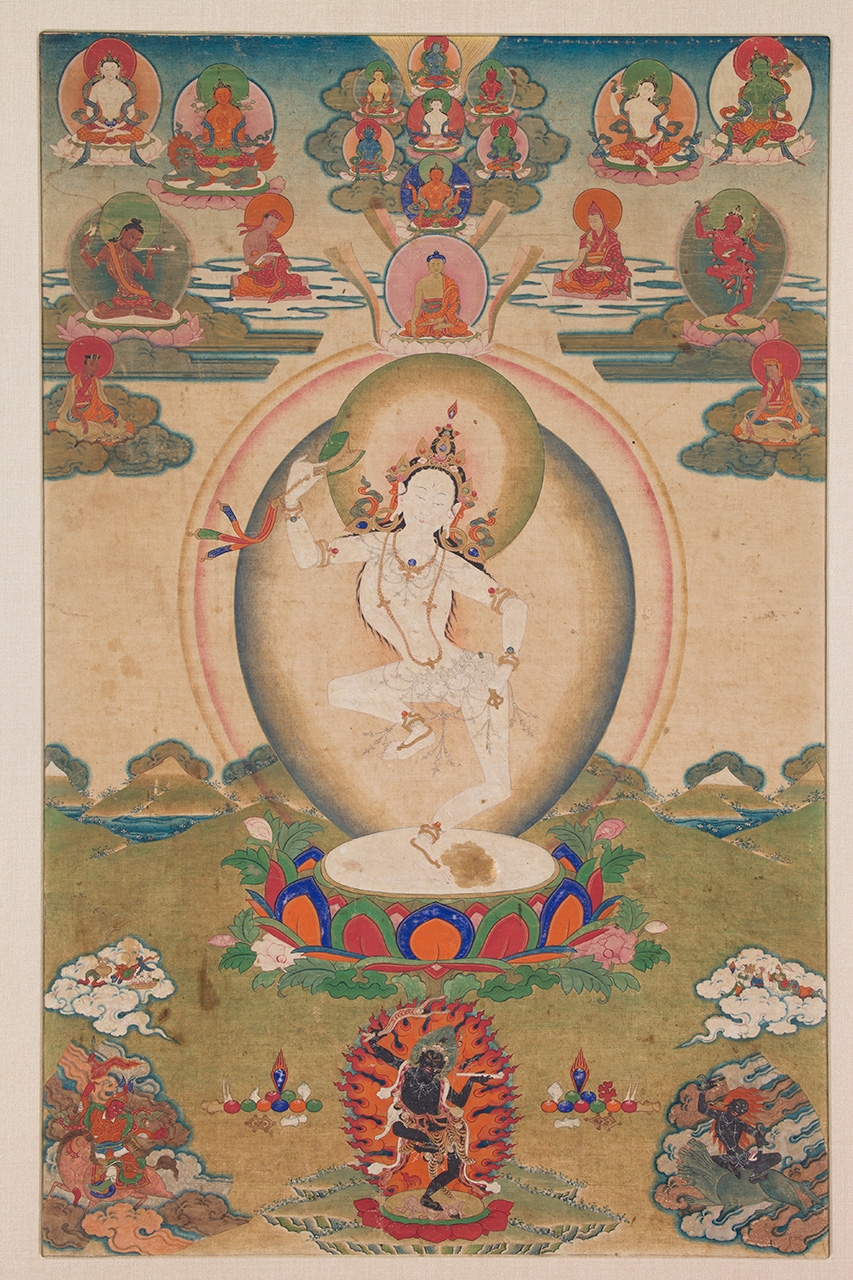
Machig Labdron (1055–1153), one of the most prominent female masters and lineage holders in Tibetan Buddhism, appears deified in this painting as a dakini, female spirits and deities who assist in a Tantric practitioner’s spiritual development through teaching and other forms of inspiration. This is because Machig Labdron transmitted the practice of the female meditation deity Vajrayogini so widely that she came to be identified with the goddess. Her face is sensitively painted, and fine attention is paid to details such as her bone ornaments. She is surrounded by deities and lineage masters, beginning with Vajradhara at top center, and including the feminine personification of wisdom, Prajnaparamita, orange with four hands in the clouds. To the upper left is her main instructor, the Indian master Phadampa Sanggye, who initiated her into a practice known as Chod, or severance practice, which involves the visualization of cutting away the human body, and ultimately the ego, as a means of reaching enlightenment. Machig Labdron is famous for helping establish Chod practice in Tibet.
This painting, with its open and receding landscape, large portions of blank canvas, spare use of pigment, and stylized clouds with indigo back-shading at their edges to suggest volume, is an excellent example of the later development of the Encampment style in Kham Province, in southeastern Tibet.
24 1/2 x 15 7/8 in.
C2010.3, HAR57037
- https://dev.rubinmuseum.org/images/content/790/c2010.3har57037___zoom.jpg
- https://dev.rubinmuseum.org/images/content/790/c2010.3har57037___zoom.jpg

